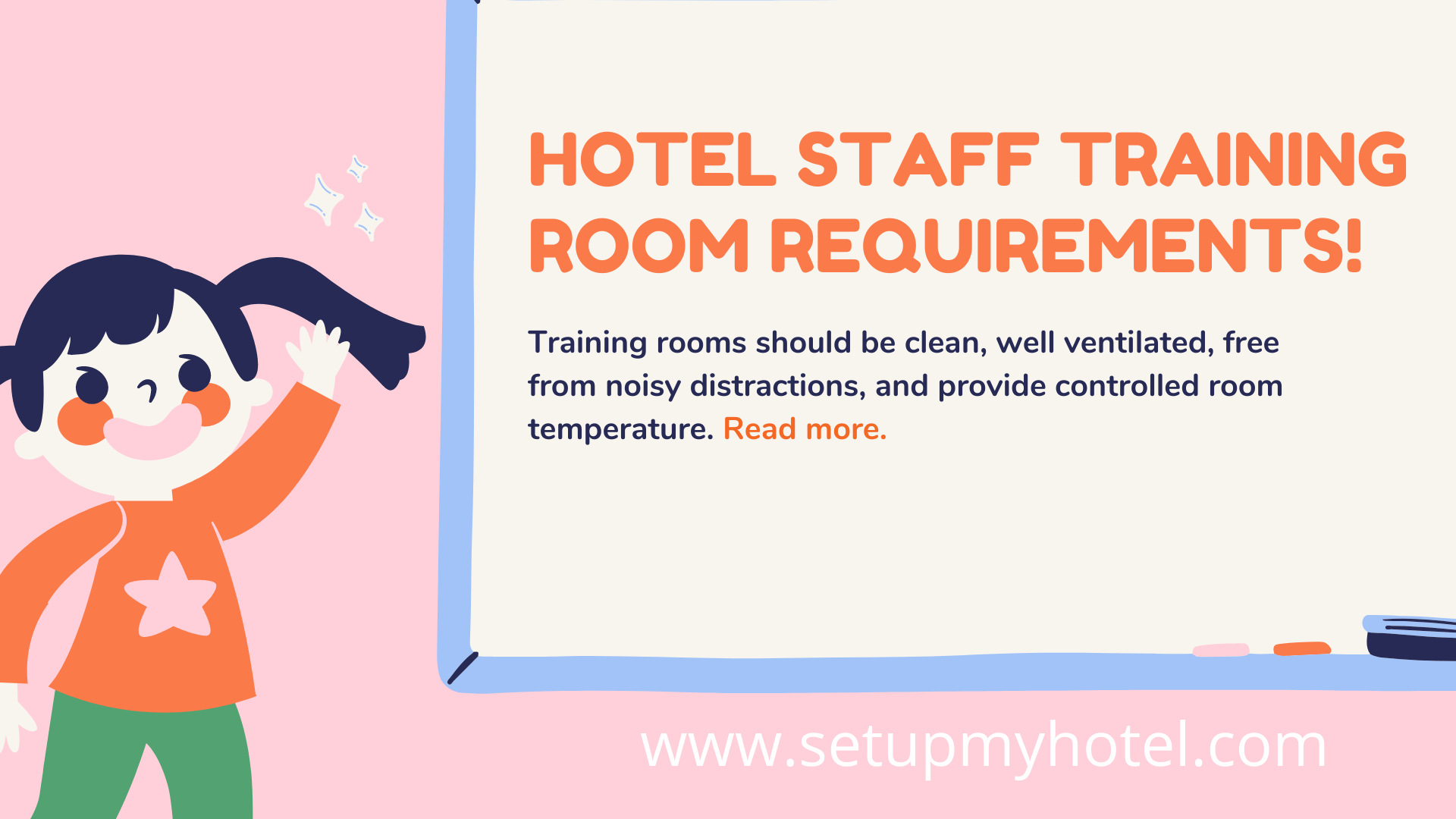Hotel Staff Training Room Requirements
In the dynamic and customer-centric hospitality industry, ensuring that hotel staff members are well-trained is essential for delivering exceptional service. A dedicated training room provides a controlled environment for imparting knowledge and skills. Here are key requirements for an effective hotel staff training room:
1. Adequate Space:
- The training room should have sufficient space to accommodate trainees comfortably. Consider the number of staff members attending training sessions and arrange seating to facilitate interaction and engagement.
2. Audio-Visual Equipment:
- Equip the training room with audio-visual tools such as a projector, screen, and sound system. This facilitates effective presentations, multimedia learning, and demonstrations.
3. Training Materials:
- Provide ample space for storage of training materials, including manuals, guides, and other resources. Organized storage ensures easy access for both trainers and trainees.
4. Comfortable Seating:
- Choose ergonomic and comfortable seating arrangements to support extended periods of learning. Adjustable chairs can accommodate different preferences and body types.
5. Interactive Whiteboard or Flip Chart:
- Incorporate an interactive whiteboard or flip chart for live demonstrations, brainstorming sessions, and collaborative exercises. These tools enhance engagement and understanding.
6. Lighting:
- Ensure the training room has adequate and adjustable lighting. Natural light is preferable, but if not possible, utilize artificial lighting that minimizes glare and provides a conducive learning atmosphere.
7. Wi-Fi Connectivity:
- Reliable and high-speed internet connectivity is crucial for accessing online resources, conducting virtual training sessions, and engaging in interactive activities.
8. Training Desks or Tables:
- Choose tables or desks that are suitable for note-taking, using laptops, and participating in hands-on activities. Ensure the arrangement allows for easy movement within the room.
9. Climate Control:
- Maintain a comfortable temperature in the training room through heating, ventilation, and air conditioning systems. A well-regulated climate ensures a focused and pleasant learning environment.
10. Access to Restrooms:
- Proximity to restroom facilities is essential for the convenience of trainees and ensures minimal disruptions during training sessions.
11. Quiet Environment:
- Choose a location away from noisy areas to create a quiet and focused learning environment. Minimize external disturbances to enhance concentration.
12. Flexibility in Room Setup:
- Design the training room with a flexible layout that can be adjusted based on the type of training. This includes rearranging tables and chairs for group activities, discussions, or individual work.
13. Accessibility:
- Ensure the training room is easily accessible to all staff members, including those with disabilities. Consider ramps, elevators, or other accommodations for inclusivity.
14. BreakBreak�is the point in the laundry wash cycle at which a high-alkaline; soil loosening product is a... Area:
- Include a designated break area within or near the training room where staff can relax, refresh, and socialize during breaks.
15. SafetySafety is a condition in which persons are safe from injury; hurt; or loss while present in the work... Measures:
- Implement safety measures such as fire exits, emergency evacuation plans, and first aid kits to ensure the well-being of staff members during training.
Hotel Staff Training Room Requirements
- Training rooms should be clean, well-ventilated, free from noisy distractions, and provide controlled room temperature.
- Meeting facilities such as conference centers and lodging properties with significant meeting businesses consider these environmental factors as meeting spaces are planned.
- Unfortunately, in many tourism and hospitality organizations, dedicated space for meetings of any type, including training, is not available.
- Instead, trainers must use multipurpose spaces such as meeting rooms or staff dining areas and sometimes must creatively find space in the dining room or other public access areas.
- Nearby lodging operations including full-service and limited-service hotels may have meeting space available at no or little cost, especially if food and beverage services for refreshment breaks and breakfasts or lunches are purchased.
- Proper table and chair arrangements help facilitate training.
- Front-of-room areas must allow space for all of the trainer’s materials and equipment.
- This can include a table, lectern, markers, whiteboard, flip chart(s), laptop computer, and digital projector (if PowerPoint overheads will be used).
- Other equipment needed can include Audio or Video Conferencing, Microphones, and speakers, a Camera, a Control Panel, Internet Connectivity, an Interactive Whiteboard, a Screen (unless wall – or ceiling-mounted), a Projector or overhead transparency projector, and other items necessary for demonstrations, handouts, or other needs.
- Trainers also appreciate ice water or another beverage, so tabletop space for this purpose is also required.
- The traditional classroom style favors interaction between the trainer and the individual trainees.
- Trainees should ideally be able to relocate their chairs for small group activities.
- The modified classroom style allows trainers to walk between trainee tables, and interactive trainee exercises are possible if chairs are relocated.
- The boardroom style encourages all trainees to interact with their peers and with the trainer.
- The large and small group discussion room styles allow, respectively, large or small groups of trainees to participate in interactive exercises.
- An ideal training room setup such as in facilities with dedicated meeting space, a traditional classroom style can be used for lecture and large group discussions, and one or more breakout rooms will be available for small group discussions.
By meeting these requirements, a hotel staff training room becomes a conducive and efficient space for learning and skill development. An investment in the training environment ultimately contributes to improved employee performance, guest satisfaction, and the overall success of the hotel.











